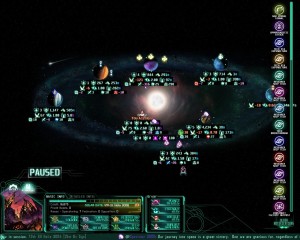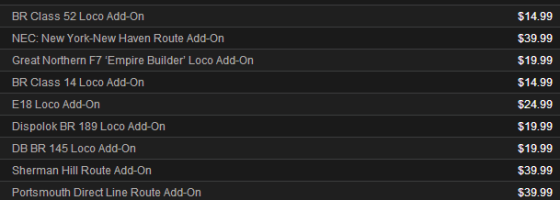Last week an interesting debate happened following the F2P mobile game Monument Valley releasing paid DLC . Fans of the game voiced their anger by negatively reviewing it citing that the developer was being greedy for charging for additional content.
Then one of the developers for Defender’s Quest talked about the rationale behind releasing a free update to the game sparked a new debate which we talked about the podcast. Figuring out what to sell and what to release as free is a tricky decision as there are good reasons for both sides.
Overtime Work:
The use of DLC to extend both a game’s lifespan and the amount of work has been a big change in game development. It’s no longer about releasing a game and then never looking at it again, these days developers can continue supporting a title for months or even years. Some big examples would be Team Fortress, World of Warcraft and League of Legends.
These titles would not have gotten anywhere as big if the developers just gave up and moved on to another project. But the problem with continuing to work on a title comes in on the question of money — How is the studio going to pay for this? The cost of game development is a tricky question and one that not many people outside of studios know about.
For game companies that operate outside of an actual physical office, there are the operating costs that have to be figured and salaries for employees. Without getting on the subject of early access, most game companies aren’t compensated until after a game is released which leaves a lot of time where these costs are piling up.
With DLC, there are all varieties that are put out by developers and this is where the debate gets interesting.
Extending a Game:
The best uses of DLC are designed to keep an audience interested in a title beyond the original development of it. Overkill Software with Payday 2 has been doing that with new heists, characters, weapons and more. This comes in the form of both paid and free DLC to the game. The response has been so received that they continued to extend the amount of work that gets put into the game and have recently announced that another studio will be continuing support into 2015.
The free DLC has been content that changes how the game has played — new skills, new class, updates to the UI, etc. While the paid content has been new options like guns, heists, masks etc. The free content is stuff that is required to enjoy and play Payday 2 while the paid has been optional.
The point is that this content took time to create with various departments at Overkill working on the game. Expecting additional content and work for free would be professional suicide for a studio of 30+ employees. And in this case, this is where having paid content makes sense as it’s a way for the developers to continue working on a property and profiting from it so that they can keep doing it.
But with that said, there is a case for continuing to support a game and not expecting additional money.
Being Charitable:
The point that the Defender’s Quest developer brought up in the post linked above was that they could have charged for a new special version of the game, much like Deus Ex’s enhanced edition. But they chose not to for several reasons, first was that making major changes to the foundation of the game and graphics engine was a big deal.
Something that they felt was important for the game’s viability and that it should not be limited to a second purchase. Some developers release enhanced editions of their games (See Capcom with the Street Fighter series) with new characters, modes and refinements and still sell the previous editions. And as the post puts it, this can create confusion among which version is the one to buy.
The second reason was that they didn’t need the money according to the developer and this was a way of giving the game another chance under the spotlight for when the developers start to advertise the sequel. This to them was more important than any profits they would have gotten from selling the new version on digital stores. And while this may not sound like a smart business move for some of you, we have seen this work out well for some games.

Arcen Games is known for supporting their titles with additional development of free updates and paid expansions to provide value to their titles.
Team Fortress has not released any paid content with the only exception could be the Mann Up mode.
Yet the developers continue to put out new content, updates, special events and more. It’s safe to assume that Team Fortress has made a profit and it would be so easy for Valve to work on expansion packs and paid content that can only be found by spending money.
But they don’t do that because they would rather build Team Fortress as a complete brand and let people spend their money willingly on supporting the game. The same goes for League of Legends who could have easily forced people to spend money on updates to maps, graphics and champions in the form of new editions of the game. But again, they chose to cultivate the fan base with this free content and figure that the visibility of it will bring people back to the game and get their current fan base further interested in playing and spending money.
As you can see, both sides of the debate make strong points and as we talked about the on the cast, it can go either way based on the content and how it is being sold.
Wearing your Marketing Hat:
Regardless of whether the content is paid or free, I do believe that developers should be compensated for the work they put into their games. Whether that comes from additional profit or increased visibility is the big question and it has to do with what the content is.
With the Binding of Isaac Rebirth, I know there are people complaining about spending money on a new version of the game, but the amount of changes and additions under the hood go far beyond just a simple engine change. Same goes for Payday 2 and how it has become a different game over the last year of continued development.
Both are examples of developers spending the time to make their titles better and they should be rewarded for it. But if you’re making improvements to the game whether they are changing the foundation or fixing something that wasn’t right, then charging for this or superficial content can be seen as a cash grab.
This is why the Defender’s Quest developers were smart in looking at the work they’ve done as an investment in getting the game and the sequel more visibility and increased sales instead of asking people for money for continued work. The takeaway for this post is that you need to look at just what it is that you’re selling and the fan base in question and spell it out perfectly how you’re going to continue supporting your title.

The developers of Defender’s Quest felt that the work they put into a new version didn’t warrant additional profit, but will get them increased visibility for their sequel.
Arcen Games is a great example of this and how they do both free and paid content with their titles. AI Wars has grown considerably and is at version 8 thanks to all the support. They’ve updated the game with free content to make it more accessible and change the base foundation while adding in supplemental content in the form of the expansions.
The free content in this case is stuff critical to the game’s continued development and support while the expansions simply extend the game and isn’t required.
No one is saying that you should nickel and dime everything or just give it all away, but knowing when and when not to make a buck is an important business decision for game developers.



